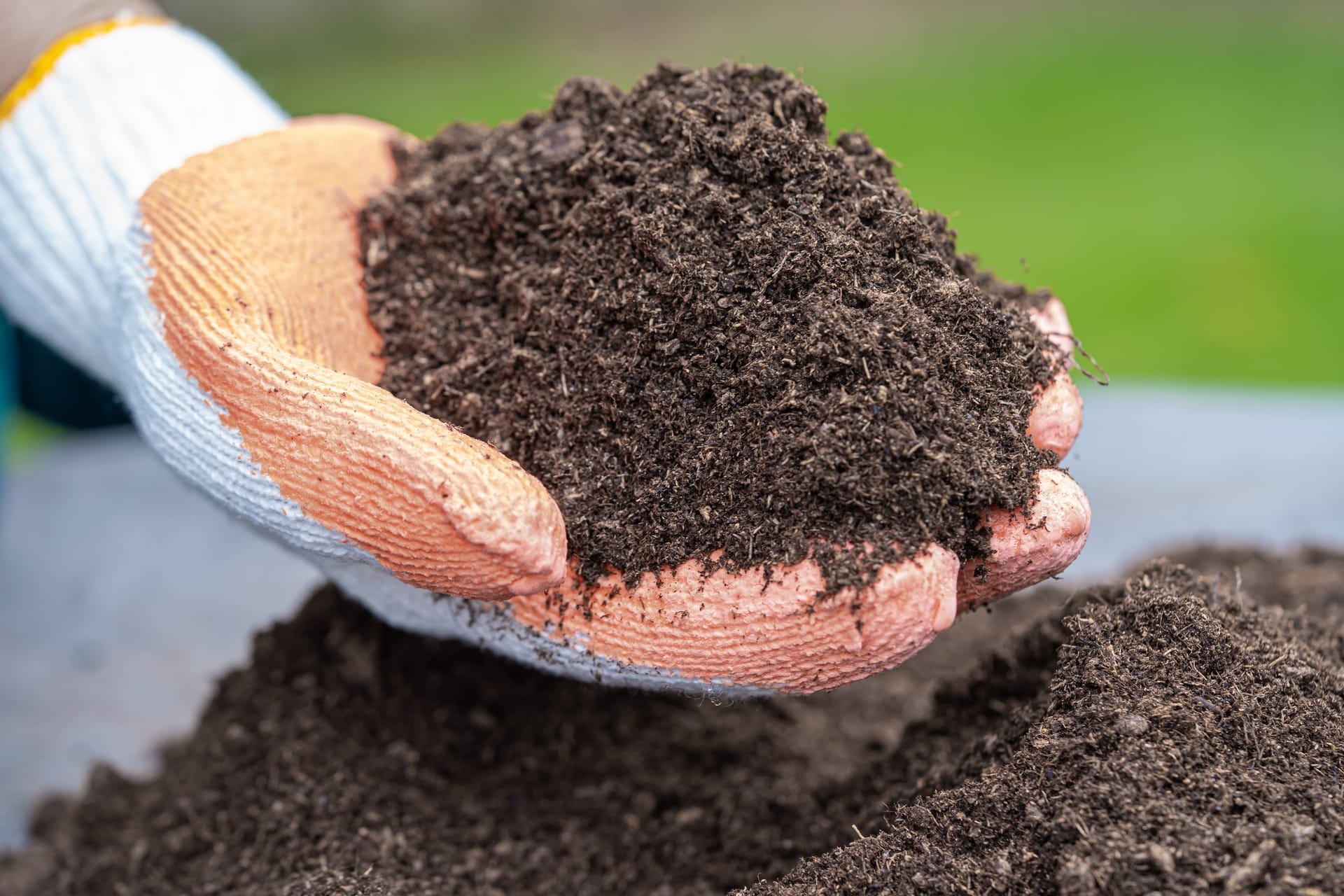Moss, because of its fragile and moisture-dependent nature, needs cautious treatment to guarantee its safe transport from one location to another.
Whether you’re a dedicated gardener wanting to transplant a lovely patch of moss to a new site or an inquisitive scientist carrying out research, it’s critical to understand the best way to transport moss.
In this article, we’ll look at the most efficient and ecologically friendly ways to transport moss, demystifying the process using simple language that anybody can understand. We’ll go through every step of this trip, from picking the best containers to maintaining the appropriate moisture levels, to assist you in preserving the vibrant, rich moss and making sure it is successfully relocated.
Types of Moss for Transport
There are several varieties of moss, each with its own set of features and transportation requirements. If you want the transporting procedure to be successful, you must be aware of the specific type of moss you are dealing with. Here, we look at the interesting world of moss and briefly cover its transportation requirements.
1. Terrarium Moss
Terrarium mosses are popular selections for indoor gardens because of their fluffy fronds and brilliant green colors. They flourish in regulated surroundings and require only a small amount of moisture during transportation.
2. Woodland Moss
Woodland mosses, which are commonly found in woods, are extremely adaptable. They can withstand varied moisture levels, making them appropriate for transport with caution.
3. Sphagnum Moss
Sphagnum moss, known for its ability to store water, is widely utilized in gardening. Its transportation requires regular moisture levels to prevent desiccation.
4. Cushion Moss
Cushion mosses form compact, cushion-like structures. They require careful packing to retain their shape and moisture content during transport.
5. Rock Cap Moss
Rock cap mosses are hardy yet delicate, thriving on rocks and stone surfaces. It is critical to protect them from excessive dampness while also keeping their fragile structure.
6. Sheet Moss
Sheet mosses are distinguished by their flat, carpet-like appearance. When transporting sheet moss, moisten it and handle it gently to keep it from drying out.
7. Haircap Moss
These mosses have unusual hair-like features on their capsules. Haircap moss is protected by carefully packing it.
You may tailor your transportation plans to the many moss kinds’ unique needs by being aware of their characteristics and preferences. This knowledge will be crucial for a good moss travel experience, whether you’re working with a moisture-loving sphagnum or a woodland moss.
Preparing for Transport
To ensure the safe movement of these fragile botanical beauties, careful planning is essential before you start the moss-transporting voyage. We’ll walk you through each step in this section, from gathering the tools and supplies you’ll need to figure out how the environment can impact the health of your moss.
Gathering the Necessary Tools and Materials
It’s crucial to have the necessary equipment and resources available before you can begin moving moss properly. What you’ll need is as follows:
Containers: Choose containers that are appropriate for the type and quantity of moss being moved. Make sure they’re clean, well-ventilated, and, preferably, transparent, so you can keep an eye on things.
Spray Bottle: Pour distilled water into a spray bottle. It will aid in maintaining proper moisture levels during the travel.
Tweezers or Forceps: These delicate tools are ideal for handling moss without breaking down its delicate structure.
Humidity Dome or Plastic Wrap: You can use a humidity dome or simply some plastic wrap to create a regulated climate within the container.
Labeling Materials: Don’t forget to label your containers with the moss species, the date you gathered it, and any other pertinent information.
Assessing Environmental Factors
Now, let’s talk about some environmental factors you should consider:
Temperature: Moss is sensitive to harsh temperatures, so keep it within its optimal temperature range while moving.
Light: Moss prefers low to moderate light levels. Keep it out of direct sunlight, especially if the trip will be long.
Moisture: Depending on the type of moss, maintain the proper moisture levels within the container to avoid drying out or becoming overly damp.
Air Circulation: Moss requires adequate ventilation, since stagnant air can promote mold development.
Transport Duration: It is important to know how long you will be on the road. Shorter trips may not need as much planning as longer ones.
With these tools, materials, and considerations in mind, you’ll be well-prepared for a successful moss-moving excursion, assuring the health and happiness of your green buddies.
Harvesting Moss
Moss, with its delicate beauty, can improve your garden or terrarium, but it must be collected safely to safeguard the environment. A guide on ethical moss harvesting practices and preparing moss for transport is available here:
Ethical Moss Collection Practices
Prioritize ethical practices when harvesting moss to avoid harming local ecosystems. First, make sure you have permission from the landowner or proper authorities to collect moss. Rather than uprooting moss, choose fallen or unattached moss.
Rather than depleting a single region, select modest bits from various patches. This encourages moss regrowth. Collecting from sensitive habitats, such as old-growth forests or protected regions, where moss plays an important role in the ecology, should be avoided.
Preparing Moss for Transport
When moss is properly prepared for transit, it arrives in its new home healthy and bright. Begin by gently removing any debris from the moss, such as leaves or twigs. If the moss has become dry, revive it by spraying it with water or short soaking it.
Wrap the moss in moist paper towels or sphagnum moss and place it in a sealed plastic bag or container with air holes to avoid desiccation during transit. During travel, keep the moss away from direct sunlight and harsh temperatures.
When you reach your destination, immediately transplant the moss to its new position, making sure it receives the appropriate light, moisture, and care for its species.
You can enjoy the beauty of moss in your garden while respecting the environment and fostering moss conservation by following ethical moss-gathering practices and taking care in its preparation for transport.
Moisture Management
Moisture management is critical while transporting peat moss to guarantee that it remains healthy and alive during the journey. Consider the following fundamental factors of moisture management:
Maintaining Optimal Moisture Levels
Moss flourishes under persistently wet circumstances, therefore it’s critical to keep it moist throughout travel. First, dampen the moss before filling it. For longer trips, softly sprinkle the moss with water or soak it briefly to ensure it’s well-hydrated.
The idea is to produce a wet environment that is not soggy. Wrap the moss in damp paper towels or set it on a bed of moist sphagnum moss to keep it moist. Make sure there’s enough moisture to keep the moss alive, but don’t oversaturate it, since this might lead to decay.
Preventing Mold and Drying Out
Maintaining moisture is critical, but so is preventing mold growth. Adequate ventilation is essential for preventing excessive humidity, which can promote mold growth. Avoid storing the moss in an airtight container, as this might trap moisture and encourage mold growth.
Use containers or bags with tiny ventilation holes to facilitate air circulation instead. Check the moss often throughout shipment to ensure it is suitably hydrated. If you observe excessive dryness, spray it lightly as needed to avoid desiccation.
When transporting moss, proper moisture control is a balancing act. You can guarantee that your moss reaches its destination in great shape, ready to thrive in its new home, by maintaining ideal moisture levels without fostering mold formation.
Securing Moss for Transit
When it comes to transporting moss, maintaining its safety and well-being throughout the journey is critical. Here are some basic tips for safely packing your moss and minimizing damage during transportation:
Techniques for Safe Moss Packing
To begin, select a suitable container that allows enough space for your moss while keeping it from moving during travel. Shallow, durable containers, such as plastic bins or shallow cardboard boxes, should be used.
To make a comfortable bed for your moss, line the container with a moist but not saturated layer of sphagnum moss or damp paper towels. Place the moss on top, making sure it’s level and equally spread. Overcrowding can cause moss compaction and damage, so avoid it.
Once your moss is in place, put a sheet of permeable plastic wrap or a plastic lid with ventilation holes over the top of the container to secure it. This keeps the moss in place while also allowing some air movement. You can put the container within a bigger box for increased stability, using crumpled newspaper or packing material to prevent movement during the journey.
Minimizing Damage During Transport
Take measures during transportation to avoid damaging your moss. Keep the container out of direct sunlight, since extended heat exposure can cause the moss to dry out or overheat.
Secure the container so that it doesn’t tilt or shift, especially if you’re carrying it in a vehicle. Consider utilizing a cooler or insulated bag for longer travels to manage temperature and protect against temperature extremes.
Check on the moss on a regular basis throughout travel, and if you detect any problems, such as excessive dryness or shifting, take prompt steps to correct the situation. You can guarantee that your moss reaches its destination safe, secure, and ready to grow by carefully following these steps.
Transportation Methods
In order to move moss safely and on schedule, it is essential to use the appropriate transportation techniques. Knowing the logistics may make all the difference whether you’re moving moss locally, farther away, or even thinking about shipping it.
Methods for Moving Moss Locally and Over Longer Distances
Moss is frequently moved locally or over short distances using personal transport techniques. Consider utilizing your automobile for local moves. As previously indicated, ensure that the moss is properly packed, and drive gently to minimize shaking.
Consider employing a reputable logistics company for longer trips. These experts are trained to handle delicate goods, such as moss, with care.
To protect the safety of your moss, choose a shipping firm that specializes in delivering fragile products and inquire about their packing and handling practices. Remember to notify them of the delicate nature of your goods so that they may take the required precautions.
Shipping Moss Safely
Shipping moss, especially across long distances or internationally, necessitates extra caution. When transporting moss, it’s critical to work with a trustworthy shipping and logistics firm that has experience with live plants.
Contact a specialized plant shipping service or check about the capabilities of your chosen logistics company in moving live plants. It is critical to use proper packing. To keep moisture levels stable, moss should be cushioned with damp but not drenched sphagnum moss or paper towels.
Ascertain that the container is safe and that it is labeled as delicate and perishable. Reduce transportation times and minimize delays that might damage the moss by using expedited shipping options.
To summarize, transporting moss locally, across greater distances, or securely shipping it is possible with the appropriate method. Personal transportation might be effective for small transfers, but for longer travels and shipment, trusting a specialized logistics firm is frequently the best option to ensure your moss arrives in perfect condition.
Conclusion
Moving moss might ultimately appear little, but it’s a delicate process that demands caution. Every important stage has been covered, from knowing your moss types to getting the right equipment and employing moral collection practices.
Remember to protect your moss from harsh weather and direct sunlight, retain the proper moisture levels, and ensure that it gets enough fresh air while traveling. Your moss will remain strong and healthy if you do this.















